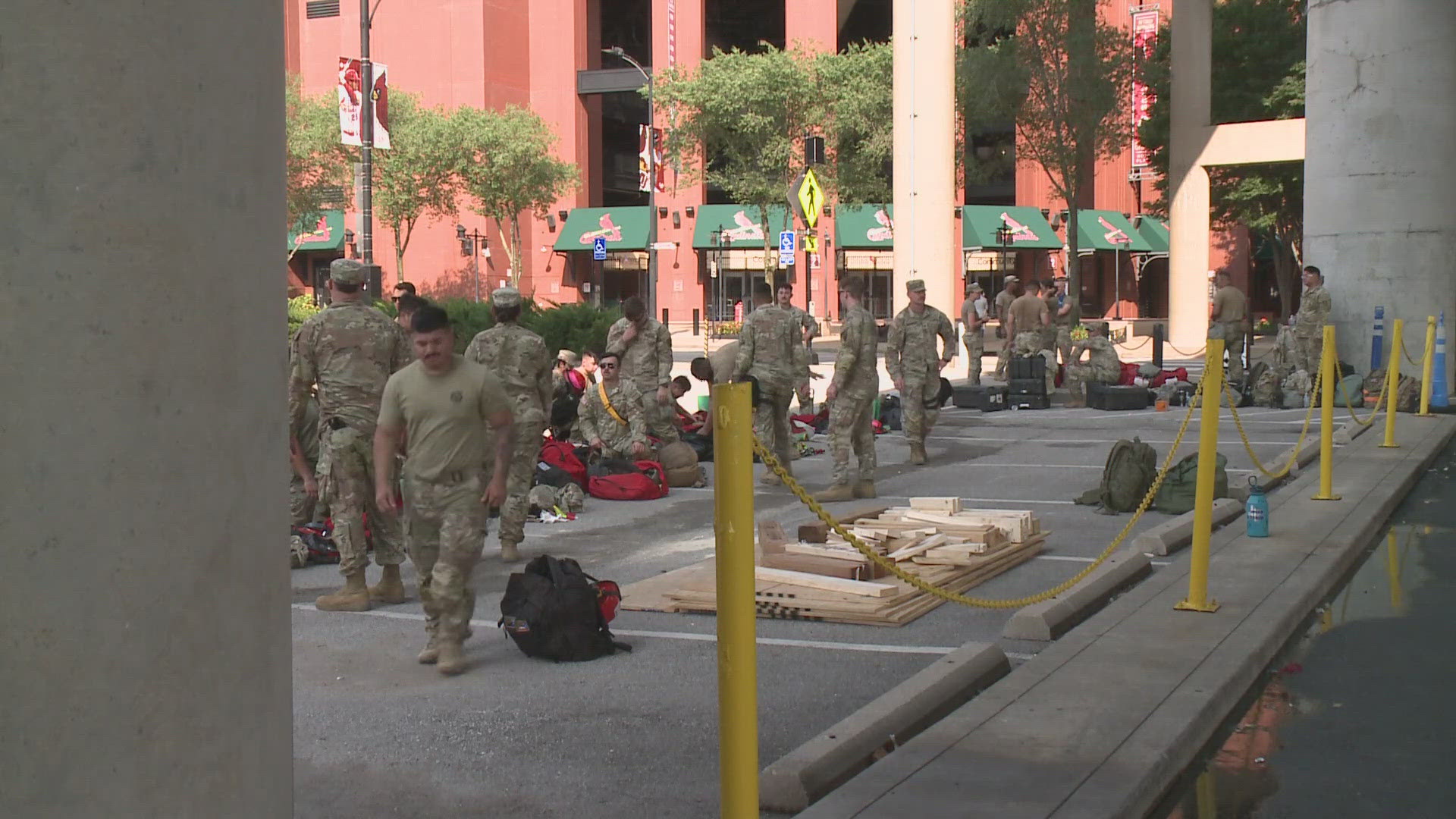ST. LOUIS — It's been nearly 34 years since Iben Browning's prediction of a massive earthquake along the New Madrid fault on December 3rd, 1990.
The false forecast rattled nerves and had many in the St. Louis region preparing for the "big one" as Missouri and Illinois sit along the New Madrid Fault.
So what if an 8.4 magnitude earthquake hit St. Louis?
St. Louis area first responders worked with federal partners and the United States Army National Guard to run through their response to a disaster like that.
Monday was the first of three days of training.
“Certainly the makeup of our city and the metropolitan area as a whole, it does present us with a lot of opportunities for damage, the need for assessment," St. Louis EMA Commissioner Sarah Russell said. "We're known for our brick structures, bricks and earthquakes are not a great match.”
The U.S. Army National Guard Task Force 46 worked alongside St. Louis fire, police and other emergency personnel to respond to lifelike scenarios using mannequins in fake high-rise rescues and even vehicle pile-ups.
“The cars are piled up in order to give the urban search and rescue team a chance and opportunity to improve upon their skill set in cutting into cars and extracting patients from vehicles,” Task Force 46 Operations Officer Major Michael May said.
They also had about 40 volunteers from the community in makeup with different types of fake injuries to go through a triage scenario.
“So looking at the different types of injuries, being able to sort them or triage them into if they'd have required urgent medical needs, and then where they would go from there,” Russell said.
Mock chemical decontamination tents were set up so that first responders could practice running through it themselves and working with civilian actors.
“For this specific scenario, there was a rail car or series of rail cars that were damaged because of the earthquake and they released vinyl chloride, or some nasty chemicals into the area,” Maj. May said.
Russell said doing this kind of training prepares them to keep St. Louisans safe.
“We get to practice locally, and even with some of our state partners on a regular basis, but it's less frequent, that we're able to partner and exercise and train alongside of our federal partners. So this was a really good opportunity for us to do that. And we're happy that they're able to come to St. Louis, and do this alongside of us,” Russell said.
Tuesday they'll be working downtown again near Busch Stadium and they'll also be working on the Mississippi River in St. Charles to assemble a temporary bridge. So if you see mannequins, Army vehicles and other activity on the river don't panic it's all part of the drill.

